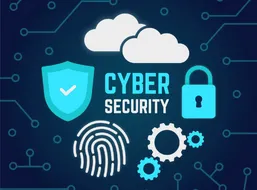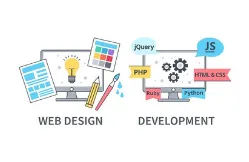How to Secure Your Software Against Cyber Threats
In the era of instant connectivity – the prospects of cyber threats are scarier than ever. Hence, for any business, developer or IT expert, it is imperative to ensure software is protected from threats that may pose a threat to their authorized users’ data as well as the public.
Here, we offer encyclopedic pieces on how to strengthen your software against threats and keep your systems safe from modern, complex dangers.
1. Cyber threats come in various forms, including:
Malware: Programs whose objectives are to sabotage or destroy systems.
- Phishing: A method used to lure Internet users into revealing personal information to the Internet site through fake Web addresses.
- Zero-Day Exploits: They are attacks that mainly focus on exploiting new loopholes.
- Ransomware: Virus that gains unauthorized access and block system resources until the owner gives in to the attacker.
2. Embrace The Secure Software Development Life Cycle (SDLC)
Security has to be integrated throughout the Software Development Life Cycle (SDLC).
A secure SDLC includes:
- Requirement Analysis: To grasp security considerations at the initial stage.
- Secure Design: For example, applying principles like working under the least privilege rule and incorporating data encryption.
- Code Reviews: Organizations should also have periodic audits to determine the organization’s weaknesses.
- Testing: Other measures include; A recognizing the use of tools such as penetration testing that basically involves practicing on an organization’s system to ascertain how vulnerable it is to considerable attacks.
3. The Others Steps Involve the Following Parts:
One of the primary goals of cybercriminals is old soft, or old software. Much of the time, hackers use the information that is available on the older versions of software since the newly released versions may have their glitches covered.
To mitigate this:
- Implement Automatic Updates: Users must receive the latest patches without any delay.
- Monitor Vulnerability Databases: It helps to know as much as possible about known issues in your software stack.
- Prioritize Critical Updates: The main emphasis should be placed on the most critical vulnerabilities.
4. To enhance the application's security, we must leverage encryption and secure authentication.
- Data Encryption: AES-256 encryption should be used for storing and transmitting important information.
- Secure Authentication Protocols: Use both MFA and OAuth for the application or website login processes.
- Tokenization: Depopulate and anonymize whenever information is processed within a system.
- Most of these measures help greatly to minimize the risk of data breaches.
5. Teach Your Team About Cybersecurity Rules
You need an informed team as the first barrier to any cyber threats in the conduct of your business. Provide training on:
- Recognizing Phishing Attempts: Education of the personnel in how to detect the fake ‘phishing’ e-mail messages.
- Secure Coding Practices: Staying away from common mistakes such as hardcore the credentials.
- Incident Response Procedures: This process focuses on making sure that a team understands how they should behave in the event a breach occurs.
6. Conduct Routine Test to Determine the Security Health
- Security audits are actually critical components of evaluating potential risks and weakness in a system. Conduct:
- Code Audits: Vulnerability scanning source code.
- Infrastructure Assessments: Look for the vulnerabilities in local servers, networks, and APIs.
- Compliance Checks: It should also make sure that it complies with such practices as ISO 27001 and GDPR.
7. Use Application Security Technology
Numerous tools are available to automate and enhance your security efforts:
- Static Application Security Testing (SAST): Identify weaknesses in the source code.
- Dynamic Application Security Testing (DAST): As mentioned in the case scenarios, you have to mimic attacks on running applications.
- Web Application Firewalls (WAF): Prevent Web applications from such threats as SQL injections.
The use of these tools in your workflow simplify the whole process of risk identification and management.
8. Secure Your APIs
Indeed, Application Programming Interfaces (APIs) prove to be a vulnerability in the many software systems. To secure them:
- Authenticate API Requests: Token and API key should be used in the purpose of verification.
- Rate Limiting: Preventing abuse is very easy, one can limit the number of requests a particular user can do in a particular time frame.
9. Plan for Incident Response
Nevertheless, you can continue to be breached Regardless of all the measures put in place. A well-prepared incident response plan minimizes damage:
- Define Roles: Specify the roles of main individuals in the team in case of the breach.
- Establish Communication Protocols: This means that stakeholders and users should be informed on such occurrences without being delayed by the other processes of the organization.
- Conduct Post-Incident Reviews: Prevent occurrence of similar case and take action that will help one not to make the same mistake.
As a software development company named Apponix Technologies, it is our policy to equip developers and IT professionals with the knowledge they require to produce secure software. Check out our courses and learn how to be ahead of the curve in cybersecurity’s constantly shifting terrain.
Web Designing and Developing | Machine Learning | Data Science
Cybersecurity |DevOps | Cloud Computing | Artificial Intelligence







